Expert insights on Hydro-Environment Pathways to Carbon Neutrality: Summary of the 1st IAHR Global Online Dialogue
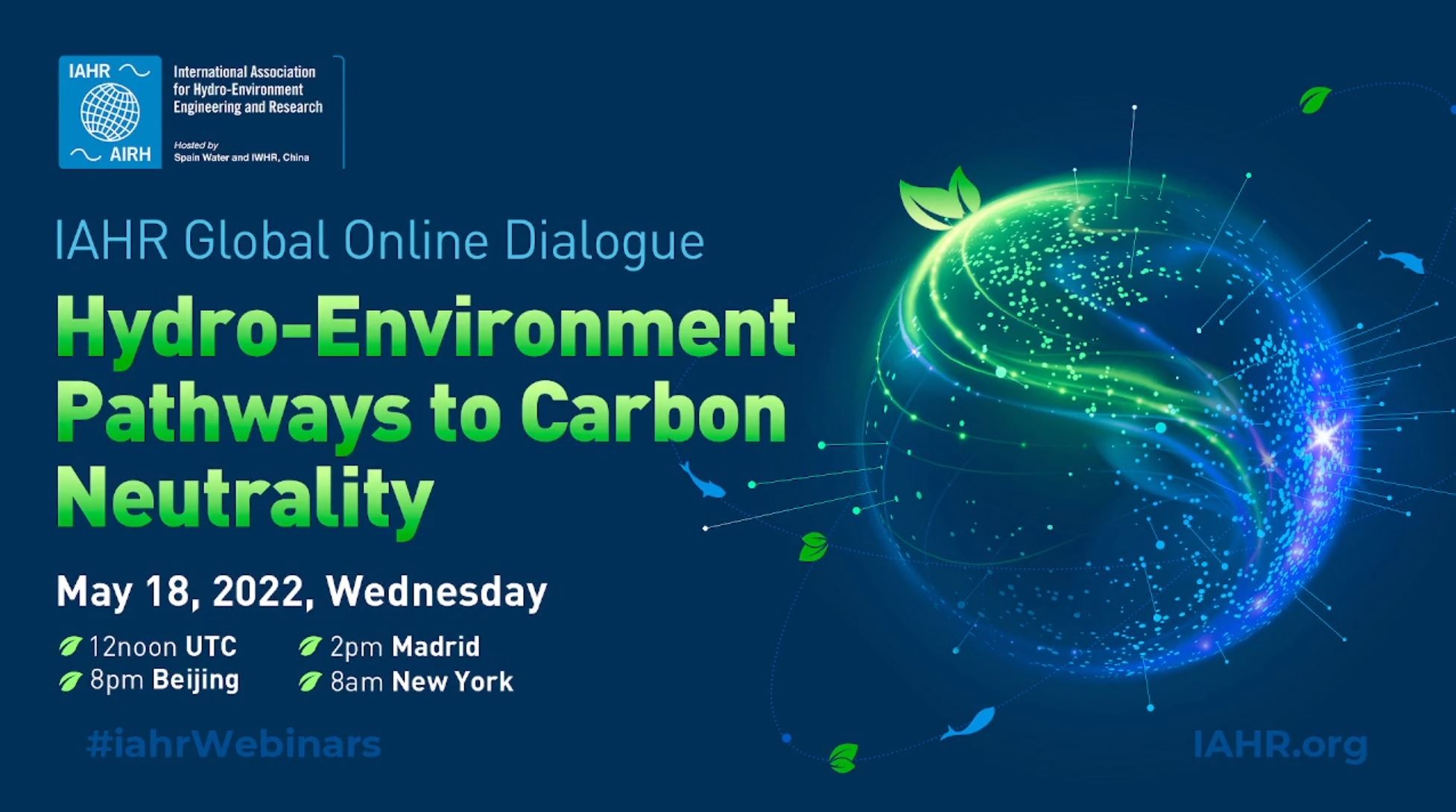
IAHR organized its first Global Online Dialogue on Hydro-Environment Pathways to Carbon Neutrality on May 18, 2022 aimed at improving our understanding of the issues, innovations, and solutions in the water sector to help nations and societies achieve carbon neutrality. Global experts and speakers from academia, the private sector, and the government were invited to discuss the priorities and opportunities in the water community and present ways in which hydro-environment engineering and research can contribute to solutions and agendas that will have the greatest impact in terms of carbon neutrality.
» Details about this event
» Watch the playback
» Watch video clips of the speaker
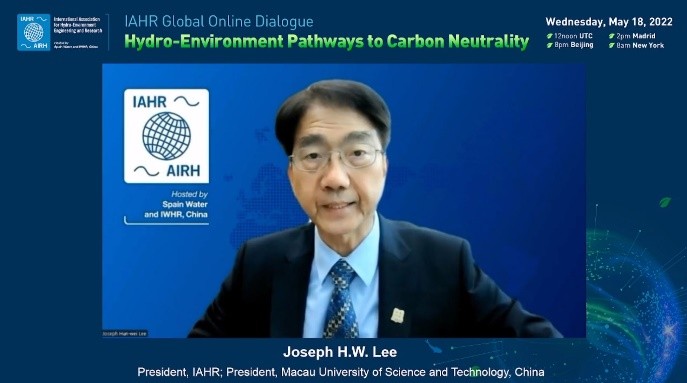
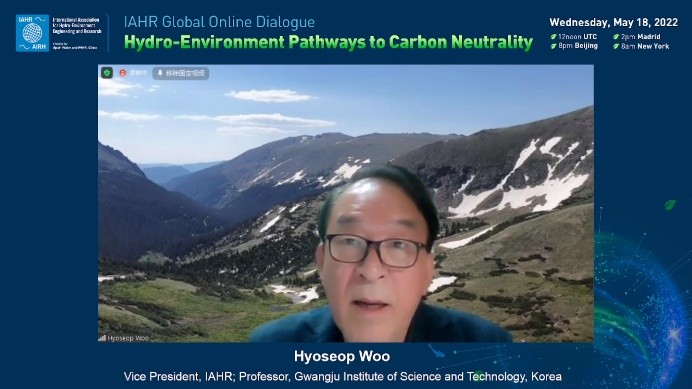
In his welcome remarks, IAHR president Joseph Lee pointed out that the objective of this event was to seek an effective pathway to carbon neutrality from the marriage of science and technology, economics, and policy. IAHR Vice President Hyoseop Woo introduced the event, saying this dialogue would provide scientific and technical knowledge for the identification of best practices across key areas, such as water related renewable energy, energy efficiency, increasing capabilities of carbon storage, and quantification of carbon emissions in the water sector.
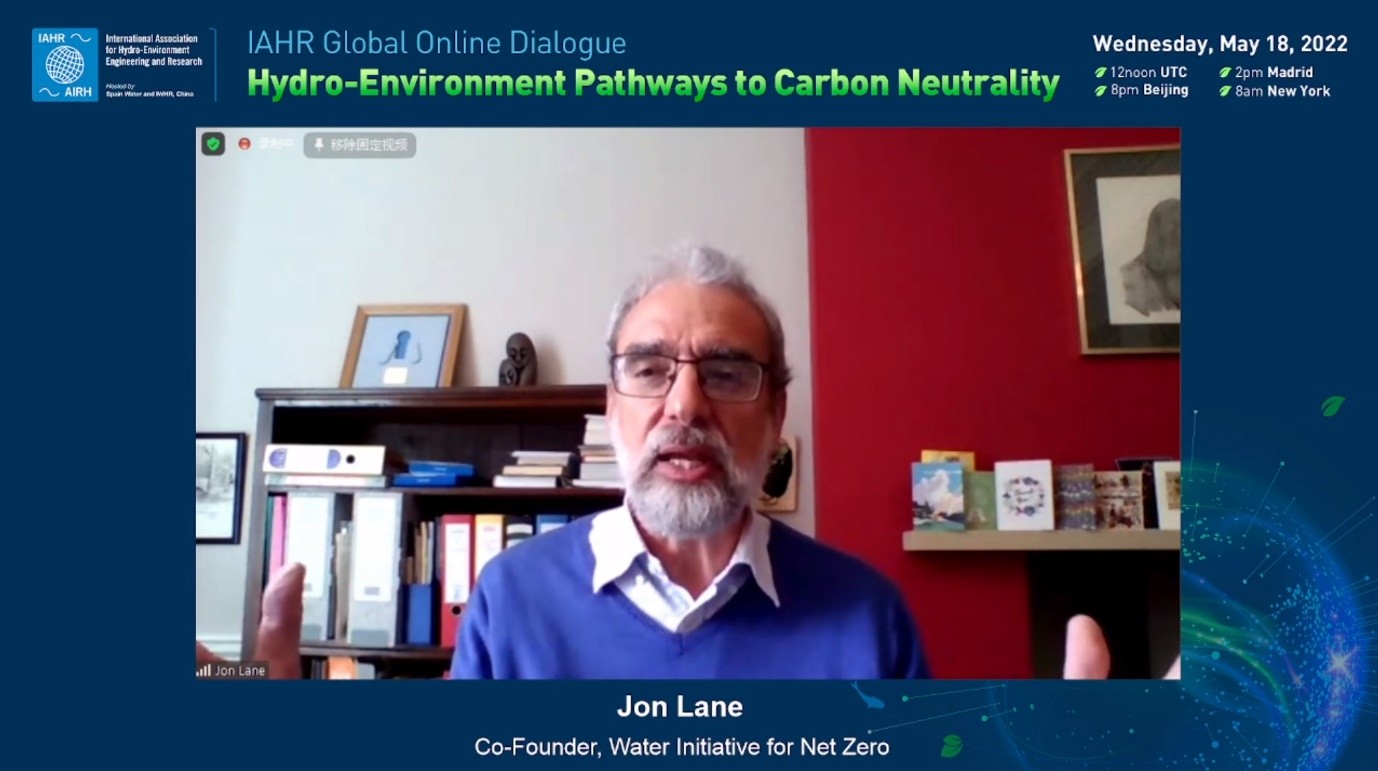
Jon Lane, co-founder of Water Initiative for Net Zero, held that the water sector could be doing more to increase awareness of how its actors can help to reduce global emissions targets, and that efforts at the cutting edge of water research and knowledge should provide up-to-date strong scientific findings on how water can reduce emissions.
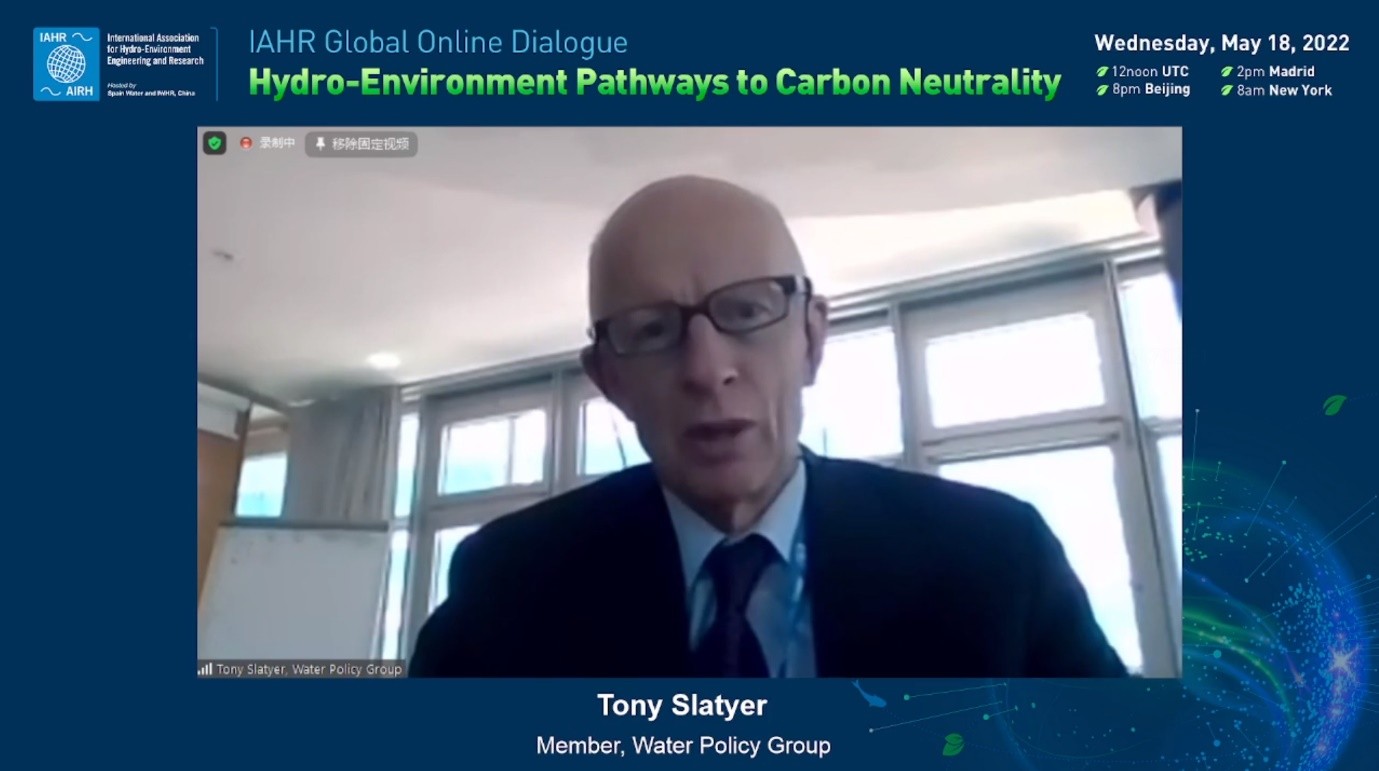
Tony Slatyer, member of the Water Policy Group and advisor to the World Meteorological Organization on Water and Climate, pointed out that contributions to large-scale emission reduction come primarily from how water is managed and via improvements in water policy management and the available practical business and guidance materials and standards, and that the development of simpler, more cost-effective technology solutions is required to support initiatives for carbon neutrality.
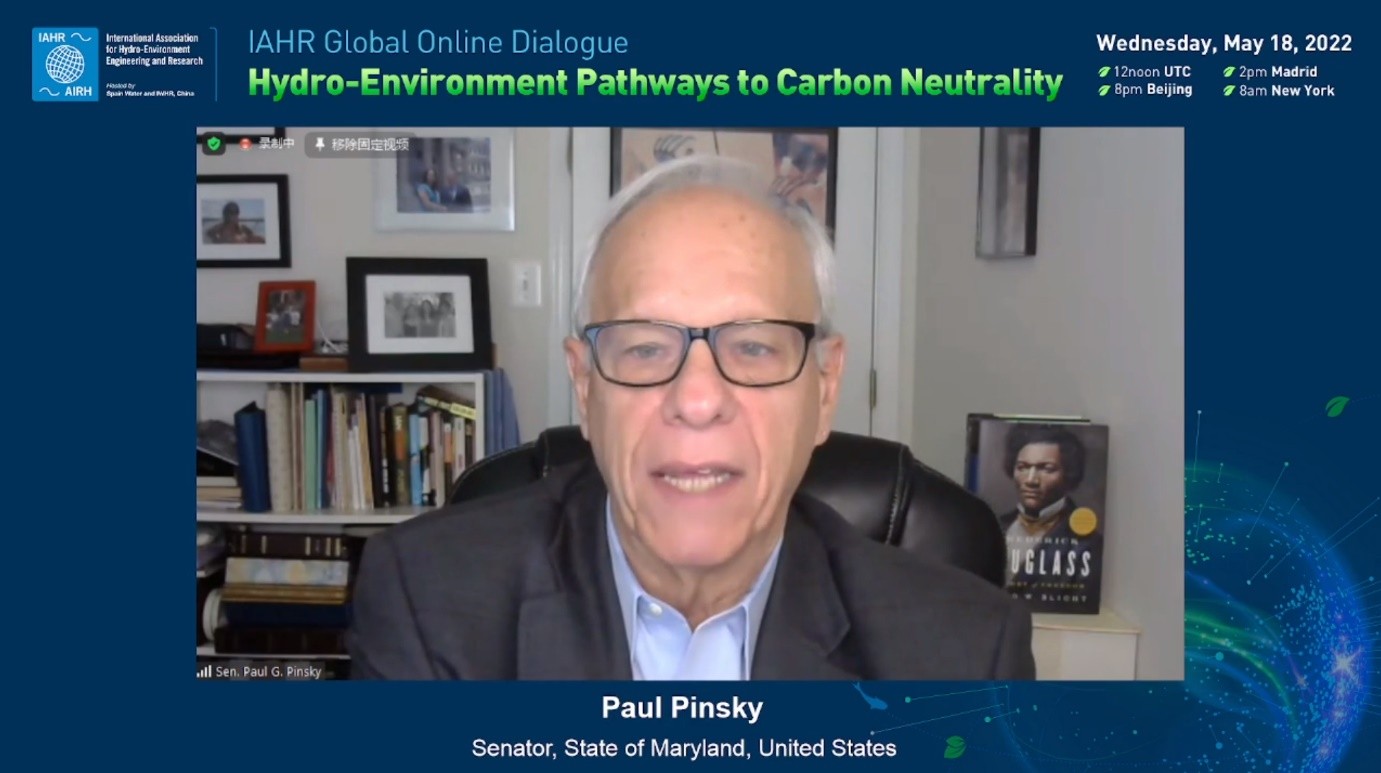
Paul Pinsky, State Senator of the State of Maryland, USA, reiterated the need for science, technologies, and innovations to support governments, and introduced the strategies employed in Maryland, including full electrification, planning carbon capture by trees, and reviewing practices around methane release.
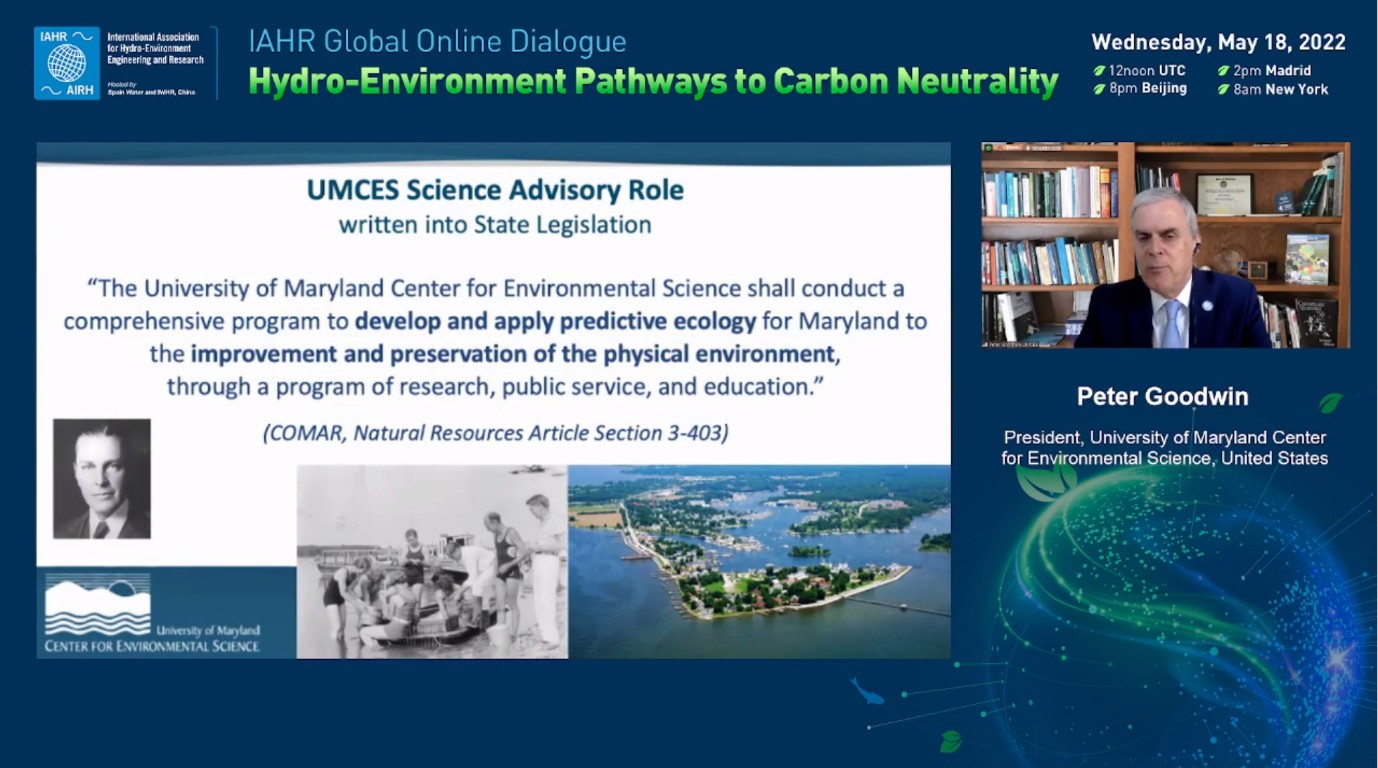
Peter Goodwin, past president of IAHR and currently president of the University of Maryland Center for Environmental Science, gave a brief introduction of the history of Maryland, the connections between science, policy, and actions, and the strategies proposed by the Maryland legislature to achieve the very ambitious goals, including smart forest management for carbon sequestration, blue carbon, and wind energy. He also highlighted the importance of the engagement of communities, and emphasized that, rather than looking separately at flood control, ecological restoration, water supply, or water treatment, waters should be managed as a whole integrated system.
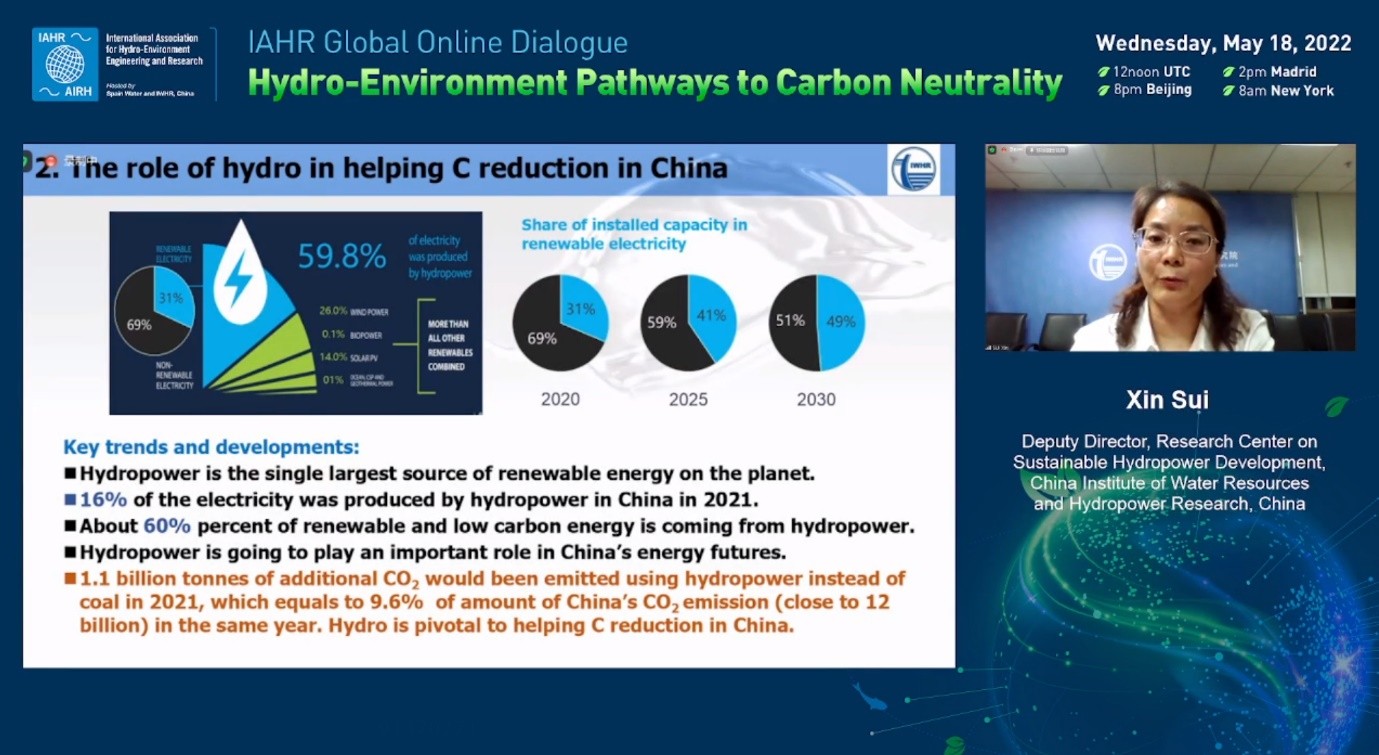
Xin Sui, deputy director of the Research Center on Sustainable Hydropower Development of the Chinese Institute of Water Resources and Hydropower Research, presented the hydro-environment pathways as well as challenges to carbon neutrality in China, and discussed innovative technologies, including the use of combined production through hybrid systems in river basins that offers optimal energy storage flexibility, reliability, and sustainability, and the strategic development of mixed Pumped Storage Hydropower (PSH).

Francois Flocard, a renewable ocean wave energy expert at the University of New South Wales (UNSW) Water Research Laboratory in the Australian Ocean Energy Group, introduced the different types of marine renewable energy, namely salinity gradient energy, ocean thermal energy conversion, and tidal energy, and provided examples and the current research and development status of technologies used to harness tidal currents, ocean wave power, and wind power, such as the oscillating converter, point absorber, and overtopping converter.

Stepfan Riedelbauch, professor of the University of Stuttgart and chair of IAHR’s Technical Committee on Hydraulic Machinery and Systems, shared his perspectives on hydropower plants and how these support carbon neutrality, and emphasized that hydroelectric power plants are ideally suited for reducing greenhouse gas emissions due to their quick responsiveness based on the physical function and lack of thermal effects, and that hydropower is a technology that has been used for over 100 years but that further research is required.

Martine Cox, researcher and consultant of Deltares, shared her perspectives on measuring and monitoring emission reductions and the effectiveness of delivering solutions, taking as a case study the BlueCAN in the Netherlands that is focused on the effects of water quality on total GHG emissions in aquatic ecosystems. She also summed up the challenges and opportunities in terms of responsibility, risks, knowledge gaps, carbon markets, and urgency.
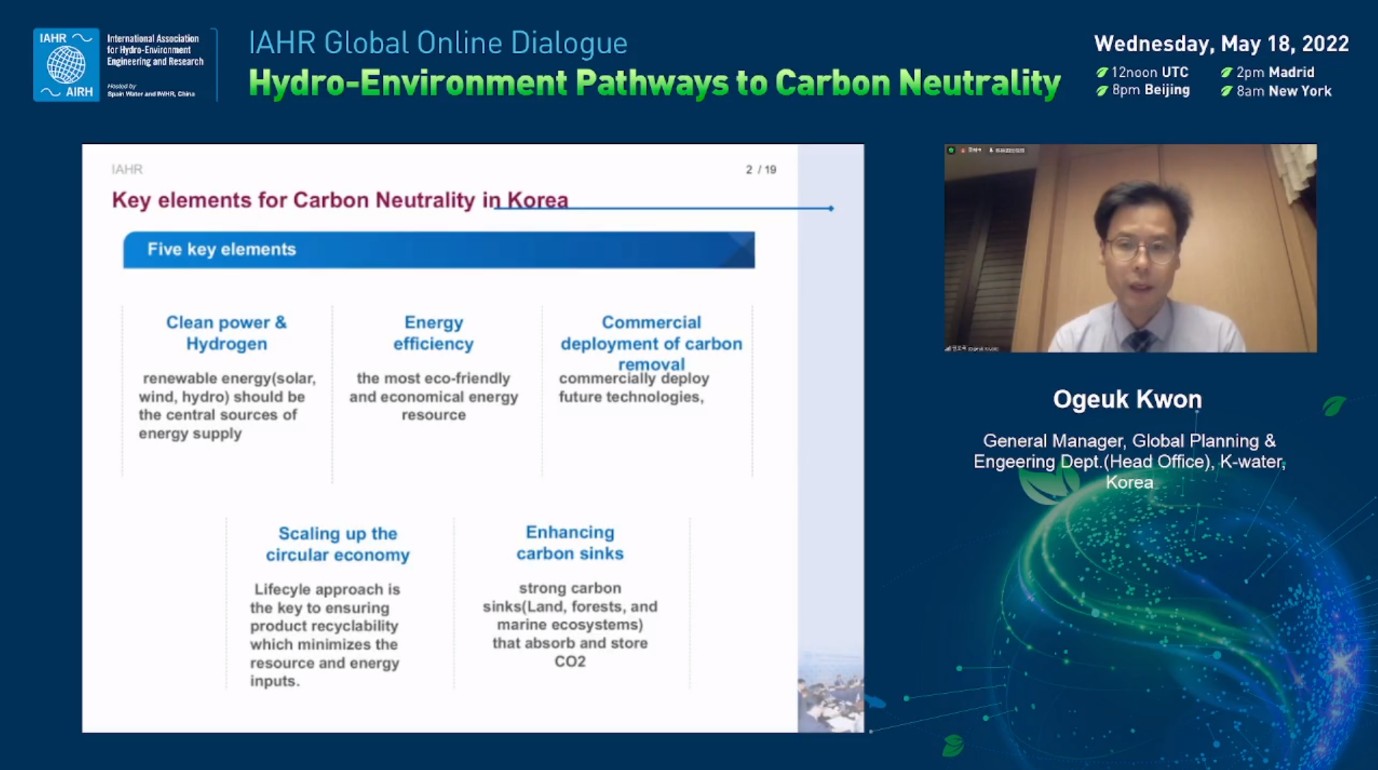
Ogeuk Kwon, general manager of the Global Planning and Engineering Department, K-water, introduced the plans of K-water and the perspectives of Korea on achieving carbon neutrality with descriptions of the targets, key elements, quantitative effects, and examples of implementation of net-zero purification plants, floating photovoltaics (PV), hydrothermal energy, and hydroelectric power.

During this “dialogue” experts also offered their advice to peers and international negotiators in realizing net zero.
Senator Pinsky is expecting to work with researchers and investors on novel innovative ways to harness clean energy. He mentioned the messaging around the broader public good needs to be improved to attract advocates and investors.
Tony Slatyer said people should be informed that the research efforts will have long-term benefits for grandchildren and their children and not short or medium-term benefits. He pointed out the winning solutions are going to generate co-benefits where emission reduction also generates side benefits for society.
Peter Goodwin stated that it takes courage for government leaders to step up and put their professional careers on the line when taking such a strong stance. He said the science community and engineering community should provide information as well as support for these leaders.
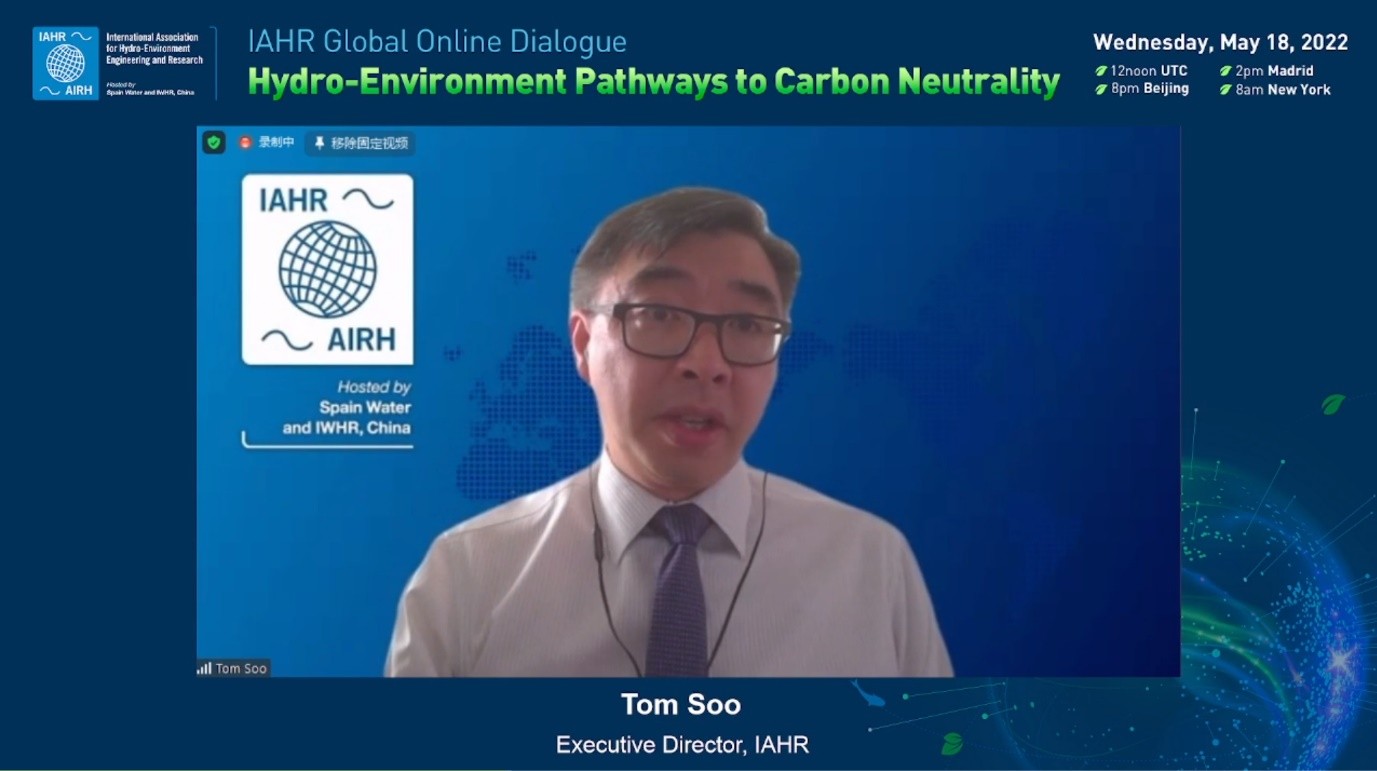
This event was moderated by Tom Soo, Executive Director of IAHR, who raised questions to encourage thoughts sharing among the speakers and wrapped up the session by emphasizing the need for the entire community of experts in hydro-environment engineering and research to contribute to efforts to reaching net zero.
IAHR seeks to accelerate action on hydro-environment pathways to carbon neutrality and invites all who are interested to contact iahr@iahr.org.
» Details about this event
» Watch the playback
» Watch video clips of the speaker